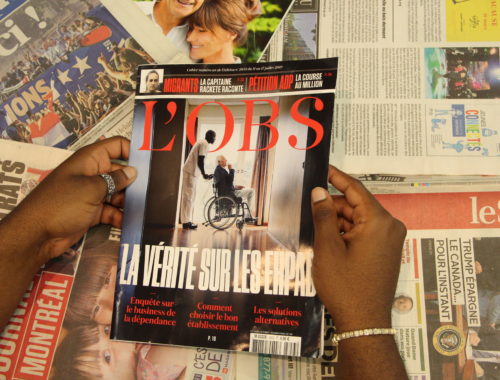
Improve Your French Writing Now With These Simple Rules
When you’re learning a foreign language, you expect to study new vocabulary, grammar, and pronunciation. However, if you’re an anglophone learning French, you’ll also be confronted with entirely different writing rules. While an extra comma or a forgotten space won’t completely ruin the intelligibility of your French writing, ça gêne la lecture (it detracts from the reading experience). If you’ve grasped the basics of the French language and are looking to upgrade your writing skills, these are the rules you need to know.
Nix the Oxford Comma
In a list of three or more items, the Oxford comma comes after the final item and before the conjunction in English.
Jalen and Maria like baguettes, croissants, and apple turnovers.
In French, the last element of a list is simply separated by the conjunction, not a comma.
Jalen et Maria aiment les baguettes, les croissants et les chaussons aux pommes.
If you’re used to using the serial comma, it can be a hard habit to break. However, with time, you’ll grow accustomed to reading and writing lists with less punctuation.
Lowercase that Title
In English, titles of published works include tons of capital letters. There’s no universal standard for which words get capitalized in English titles, but all words are generally capitalized, except for minor words.
In Search of Lost Time (Novel by Marcel Proust)
The French are more particular about which words in a title deserve capitalization, meaning that the starting point isn’t to capitalize all words. More often than not, French titles will have surprisingly few uppercase letters from an anglophone point of view.
À la recherche du temps perdu (Roman de Marcel Proust)
If you’re referencing a published work in your text, it’s worth your time to verify the way that the French capitalize it. Including superfluous uppercase letters will strike your reader as odd.
Trade Quotes for Guillemets
English quotation marks are inverted commas that mark exact language.
“Quotation marks look like this.”
French quotation marks, called guillemets, are functionally the same as English quotation marks, but they are double chevrons instead of inverted commas.
« Les guillemets ressemblent à ceci. »
Though French speakers wouldn’t be stumped by the use of English quotation marks in your French writing, using guillemets is the correct choice for a polished French text. It’s as simple as learning the shortcut on your keyboard!
Add More Spaces
In English, as a general rule, punctuation is followed by a space.
I’m going to the Eiffel Tower later! Want to come with me?
However, in French, colons, semicolons, exclamation marks, question marks, and quotation marks have spaces both before and after.
Je vais à la tour Eiffel tout à l’heure ! Tu veux me rejoindre ?
Adding these spaces is a forgettable detail, but it makes all the difference in your French writing. Using English punctuation rules in French is a surefire way to cheapen the value of your text.
Punctuate Numbers Differently
To facilitate reading numbers of four digits or longer, English speakers use commas as thousands separators. To indicate a decimal, they use a period.
1,234,567.89
French speakers use spaces as thousands separators and commas as decimal indicators.
1 234 567,89
Punctuating numbers à la française is arguably one of the most difficult transitions to make as an anglophone learning French because, well, it just looks weird. Nevertheless, to ensure your reader understands the number you’re trying to convey, it’s essential to do it correctly.
While this list is by no means comprehensive, learning these rules will ensure that your French writing is easily readable. Correcting these errors in a text will take you from being perceived as an anglophone who can communicate in French to a thorough French speaker who pays attention to detail. Did you learn something new? Got a rule you’d add to the list? Let us know in a comment!
Improve your French easily by watching this video!
You May Also Like

Five Reasons the News is a Great French-Learning Resource
October 1, 2019
Learning Languages with a GPT-3 Chatbot: Exciting Artificial Intelligence
May 17, 2023


One Comment
Caroline
This is the easy stuff! What about the harder things, like the need to use different words to refer to the same thing? In technical writing in English, you pick a name for something and stick with it. In French that’s really bad style. I lost points on the DALF for this … My French colleagues have to work at it in the reverse direction.